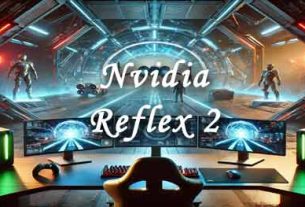The GeForce RTX 50 Series is the latest innovation in NVIDIA’s lineup of GPUs, powered by the groundbreaking NVIDIA Blackwell architecture. This new series brings major advancements in gaming, AI, and creative workflows. Here’s a guide to some of the most frequently asked questions about the GeForce RTX 50 Series.
1. What is the NVIDIA Blackwell architecture?
The NVIDIA Blackwell architecture is the foundation of the GeForce RTX 50 Series, designed to deliver revolutionary performance and capabilities for gamers, creators, and developers. It features fifth-generation Tensor Cores and fourth-generation RT Cores, enabling significant advancements in AI-driven rendering, including neural shaders, digital human technologies, and enhanced geometry and lighting. The Blackwell architecture offers unparalleled computational power and is set to change the future of computer graphics, especially with its powerful AI capabilities.
2. How much faster is the GeForce RTX 5090 compared to the previous generation?
The GeForce RTX 5090 based on the Blackwell architecture delivers a massive performance boost, being up to 2x faster than the GeForce RTX 4090. This improvement comes from architectural enhancements, better energy efficiency, and the introduction of DLSS 4 (Deep Learning Super Sampling), which enhances performance while maintaining high graphical fidelity.
3. What is DLSS 4 and how does it improve performance?
DLSS 4 (Deep Learning Super Sampling 4) is the latest iteration of NVIDIA’s AI-powered upscaling technology. It introduces a key feature called Multi Frame Generation, which uses AI to generate up to three frames for every rendered frame. This results in significantly higher frame rates and smoother gameplay. Combined with other DLSS technologies, DLSS 4 can boost performance by up to 8x compared to traditional rendering. Additionally, it utilizes the transformer model architecture for improved stability, detail, and anti-aliasing.
4. How does NVIDIA Reflex 2 reduce latency?
NVIDIA Reflex 2 introduces Frame Warp, a technique that updates a rendered frame with the latest mouse input just before it is displayed on screen. This reduces latency by up to 75%, resulting in improved responsiveness. This is especially beneficial in competitive multiplayer games where reaction time is critical. It also enhances the responsiveness in single-player titles, making them feel more connected to the player’s actions.
5. What are RTX Neural Shaders?
RTX Neural Shaders are small AI networks integrated into programmable shaders that enhance the visual quality of real-time games. These shaders are capable of rendering film-quality materials, lighting, and various effects, making the gaming experience more visually immersive. By leveraging AI, they significantly improve the realism of effects like reflections, shadows, and lighting.
6. What are the advancements in AI-powered character rendering?
With RTX Neural Faces, NVIDIA uses AI to create high-quality, real-time digital faces based on simple rasterized input. This technology is supported by new ray-tracing techniques for hair and skin and the innovative RTX Mega Geometry, which allows for a much higher number of ray-traced triangles in a scene. These advancements combine to bring incredibly realistic characters to life, offering unmatched realism in digital human rendering.
7. How does the GeForce RTX 50 Series enhance creative workflows?
The GeForce RTX 50 Series introduces FP4 precision, which boosts the performance of AI image generation for creative applications like FLUX. It also supports generative AI models running locally with a reduced memory footprint, improving efficiency for tasks like image editing and content creation. Additionally, the NVIDIA Broadcast app receives new AI-powered features, such as Studio Voice for enhanced microphone audio and Virtual Key Light for improved facial lighting during livestreams.
8. When will the GeForce RTX 50 Series GPUs be available?
The GeForce RTX 5090 and RTX 5080 GPUs will be available starting January 30th. The RTX 5070 Ti and RTX 5070 will follow in February. Laptops equipped with the RTX 50 Series GPUs will be available starting in March.
The GeForce RTX 50 Series is poised to redefine gaming and creative experiences. With groundbreaking innovations in AI, graphics, and performance, NVIDIA is setting a new benchmark for what’s possible in the world of computer graphics. Whether you’re a gamer looking for higher frame rates or a creator seeking advanced rendering capabilities, the RTX 50 Series offers the power and tools to bring your vision to life.



